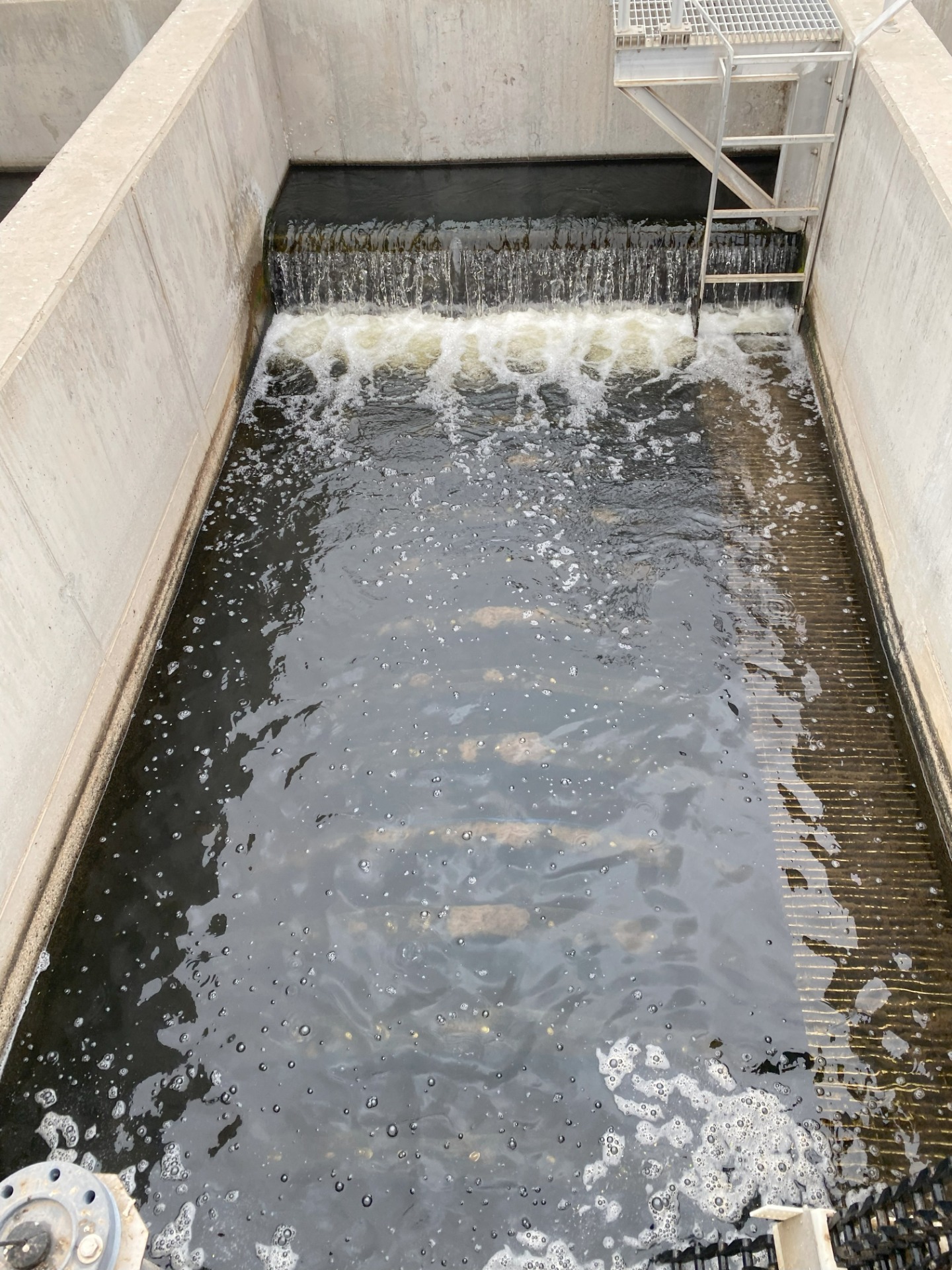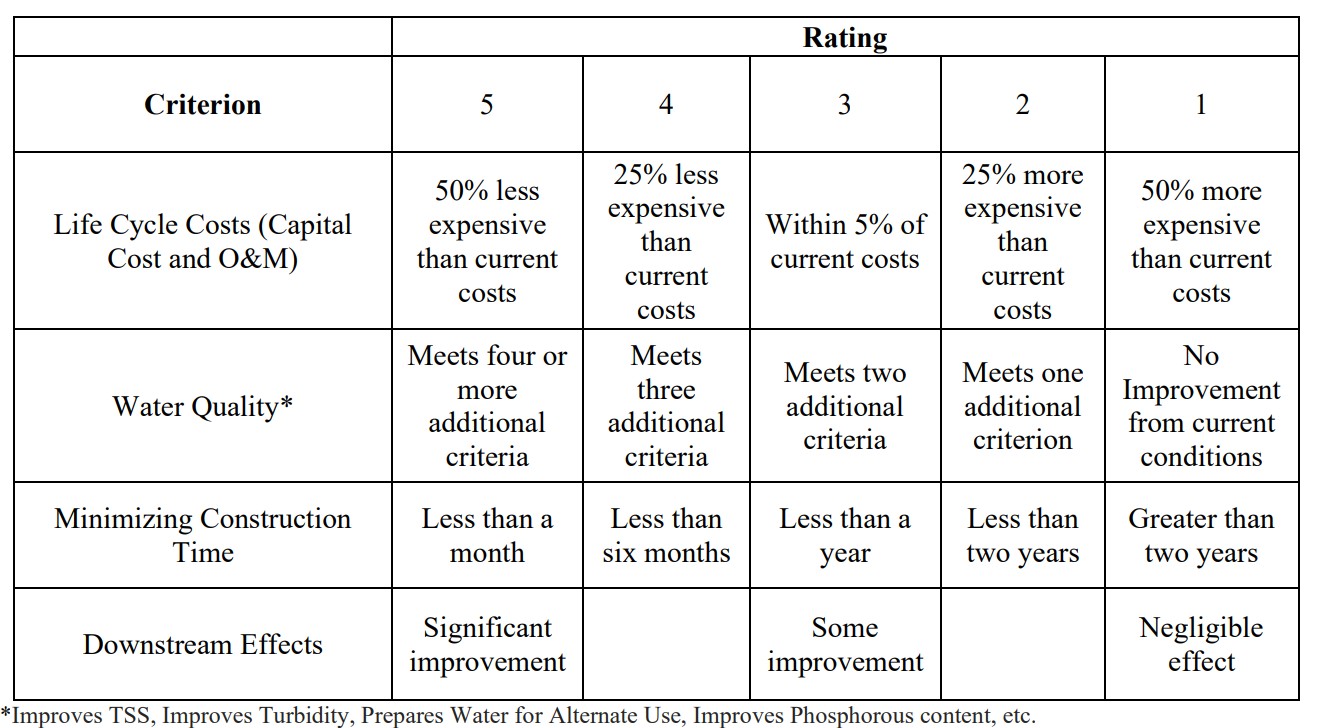Image by: Andrew Shipley
Advanced treatment removes remaining total suspended solids (TSS), nutrients, and other pollutants.
The existing advanced treatment system consists of 12 disk filters each with a capacity of 1.6 MGD, for a total plant capacity of 19.2 MGD.

Image by: WCWW
Three alternatives were considered for the advanced treatment process: no change to the current process, the reincorporation of the antiquated sand filters, and an upgrade to drinking water quality effluent, through the use of membrane filtration.
Each alternative was scored 1-5 (1 being the worst and 5 being the best) based on how well they met each criterion. A summary of how each criteria was scored can be found in the following table.

The decision matrix consisted of four criteria: lifecycle cost, water quality, minimizing construction time, and downstream effects. The lifecycle cost was weighted the highest since the existing advanced treatment adequately meets the needs of the SPA 1 WRF.

It is recommended that no change be implemented to the existing advanced treatment process. Though a membrane filtration system would increase the water quality to drinking water quality standards, the high capital and O&M costs outweighed this score. Additionally, the sand filtration would increase the capacity, but not impact the quality, and be more expensive to operate. This resulted in the selection of no change to the current advanced treatment.
